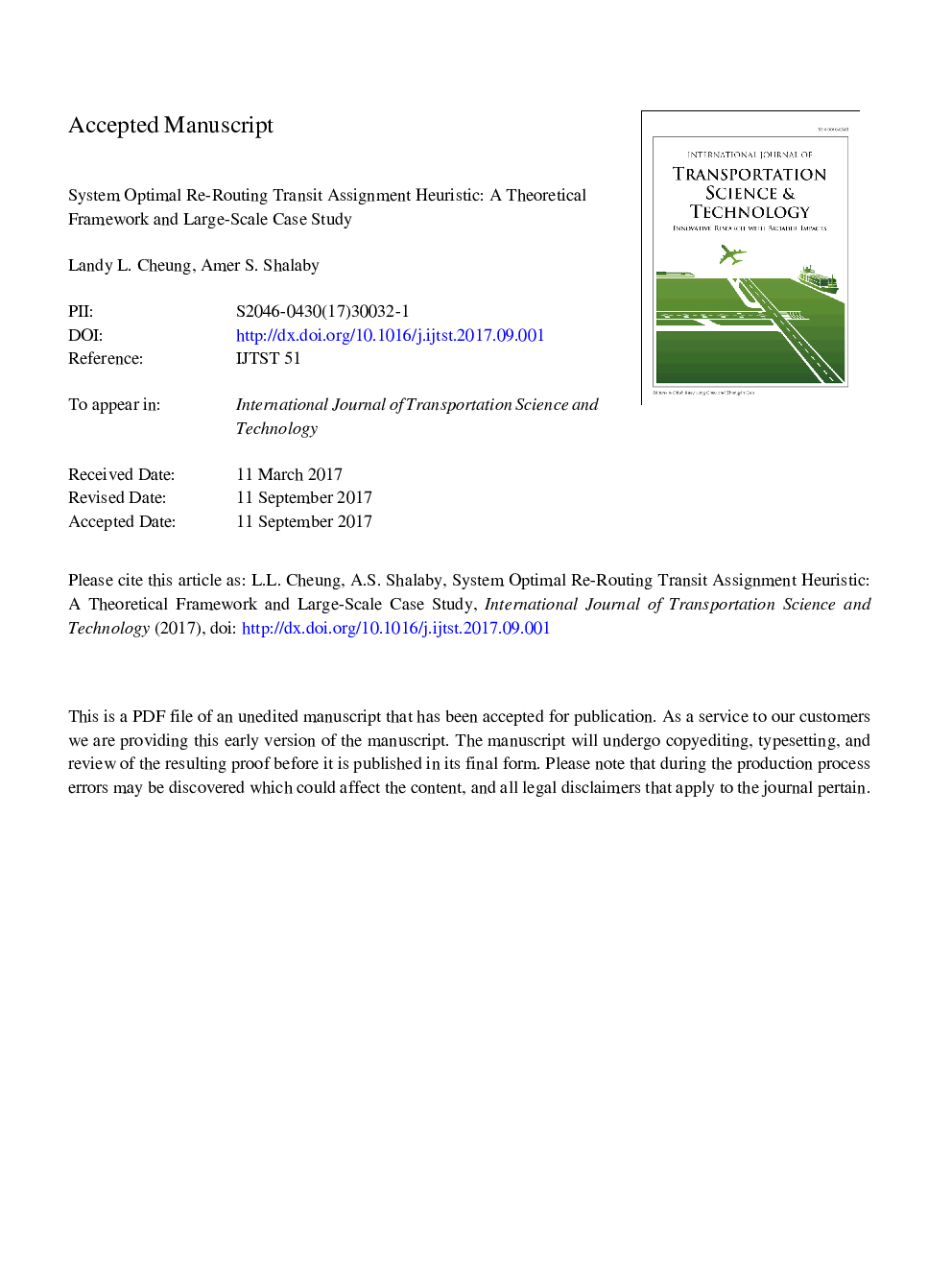| Article ID | Journal | Published Year | Pages | File Type |
|---|---|---|---|---|
| 6749636 | International Journal of Transportation Science and Technology | 2017 | 24 Pages |
Abstract
Traditionally, transit network assignment is modelled based on the user equilibrium principle, according to which individual passengers are assumed to select paths that minimize their travel disutility. Models that follow this principle result in sub-optimal system performance when the transit lines become overcrowded. This study presents a new framework for the transit assignment problem to address the system performance of an overcrowded transit network while integrating individual travel needs. It proposes a novel approach, called System Optimal Re-Routing Transit Assignment Heuristic (SORTAH), which produces a user-constrained system optimal solution by reducing the number of overcrowded segments and spreading out the demand to better utilize routes that are under capacity. SORTAH minimizes the overall congestion effects of a transit network and leads to a better performing solution than that of a user equilibrium model, while simultaneously guaranteeing superior fairness compared to the pure system optimal model. A large-scale real-world application was conducted on the Toronto Transit Commission (TTC) network. SORTAH was capable of reducing the number of overcrowded routes on the TTC network without adversely affecting the total travel time. Critical systemic gaps that need to be addressed in order to reduce the overall network congestion were uncovered. The study also revealed that realistic passenger paths are bounded by existing network design and capacity.
Related Topics
Physical Sciences and Engineering
Engineering
Civil and Structural Engineering
Authors
Landy L. Cheung, Amer S. Shalaby,
